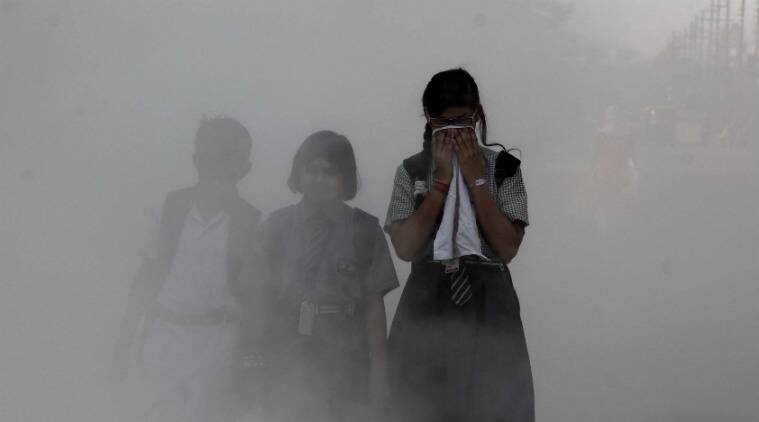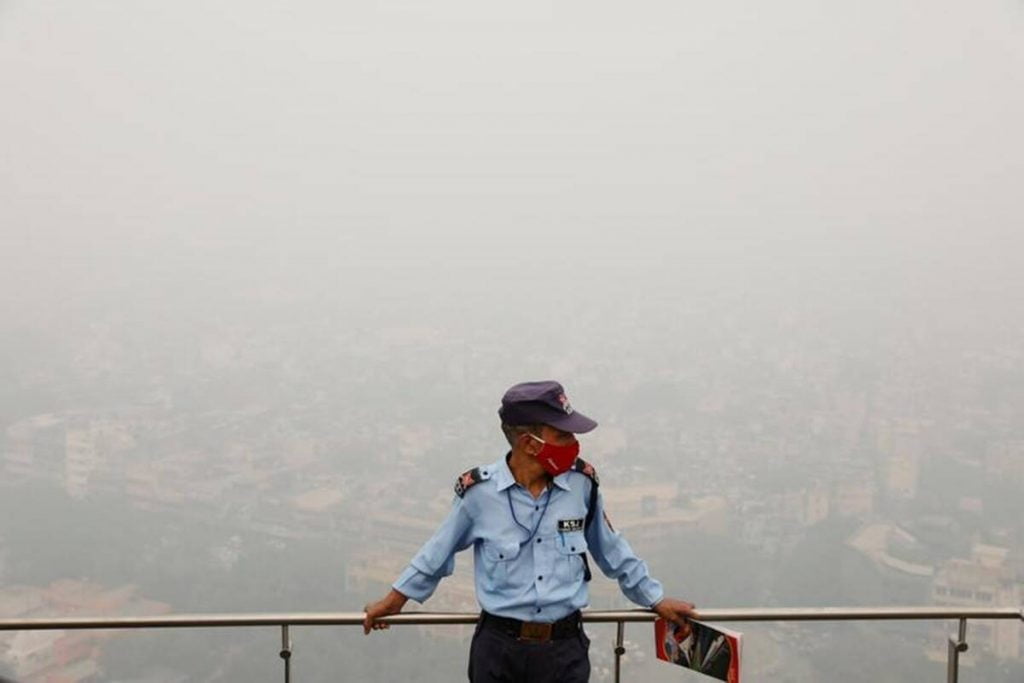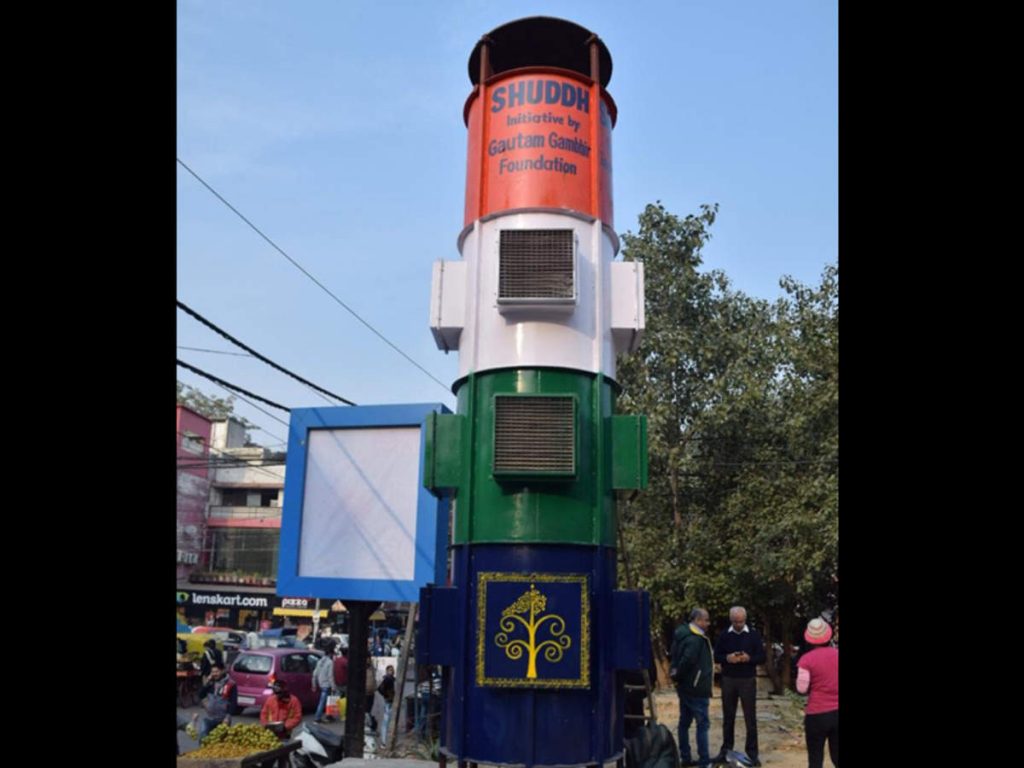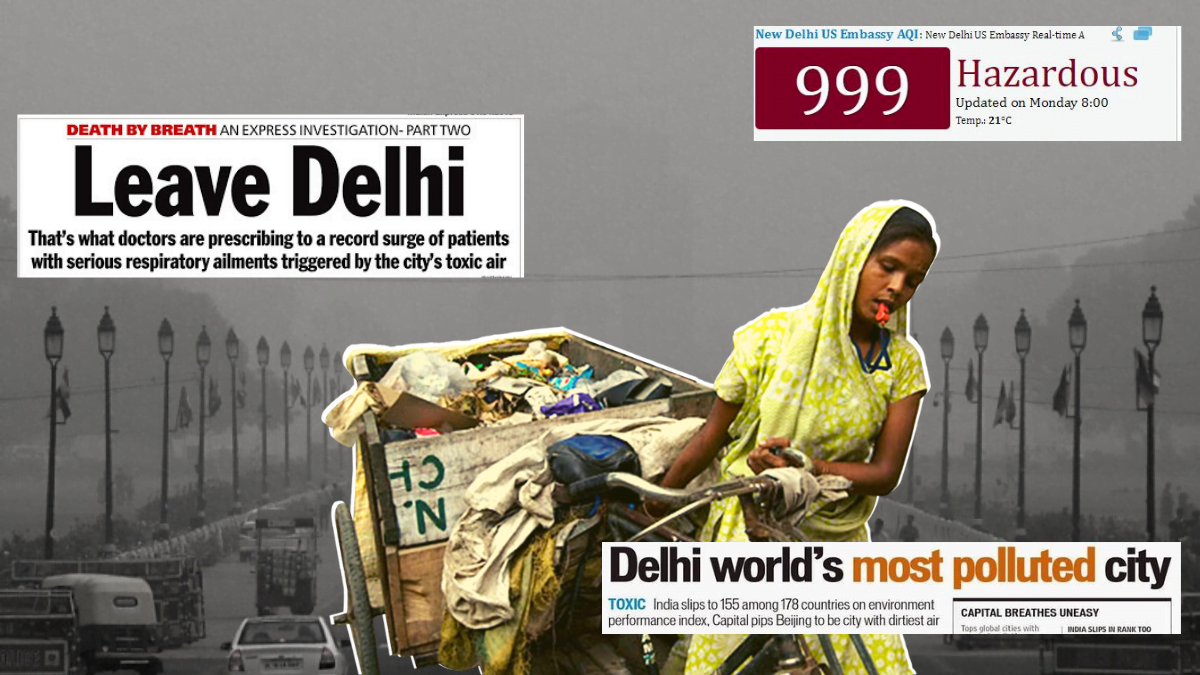When speaking of matters on equality, you might not expect that environmental pollution would seem as an equalizer in a globally warmed world. It is to a certain extent correct when people insist that ‘pollution affects everyone’ because we all share the same ecosystem. However, the long-lasting implications of pollution on different bodies tend to vary. While the privileged not only manage to keep themselves in safer spaces when fighting against pollution, they additionally have the advantage of accessing better healthcare resources in order to combat the perilous diseases that arise due to the exposure to pollutants. Such is also the case for the ongoing pollution scare due to deplorable Air Quality Index stats in Delhi. Needless to say, people from minority communities across the city tackle maximum exposure to pollutants with minimal resources due to the structural forms of inequalities prevalent in our society.

The Delhi government in the past has tried to create policies and regulations to challenge the increasing air pollution levels in the city, which occurs especially during winters due to a host of reasons—of which stubble burning has been determined as one of the main factors. Every year, farmers in Punjab harvest their crops and owing to the lack of proper agricultural infrastructure and plan, they are forced to resort to environmentally hazardous solutions. Despite their protests against Farm Bills, the state’s disregard towards Indian farmers has led to the repeated failure of devising policies that address both the matters of farmers as well as ensure a healthy, pollution-free environment for all.
This perennial drop in air quality in India’s capital has become a ritual in itself whereby every year, the city’s population gears up with masks and vitamin-rich diets to immune themselves against the deadly effects of air pollution. But having said that, and coming back to the point on whether the pollution really is an equalizer, we need to realise that certain sections of the city’s population are more affected than others. Environmental pollution then becomes a parameter of revealing the already existing social and economic inequalities.
The perennial drop in air quality in India’s capital has become a ritual in itself whereby every year, the city’s population gear up with masks and vitamin-rich diets to immune themselves against the deadly effects of air pollution.
Choking Throat, Burning Eyes: Delhi On Fire!
‘Every time November comes up until February, it is just impossible to really live in Delhi. Despite having the privilege of cars and the choice of not to stay out on the streets, even 5 minutes of spending any time outside really clogs your (bodily) system. You feel like you are choking, you can feel the pollution in your throat, you can feel it in your eyes. I end up feeling nauseous, I have a headache and it also feels hazardous to my mental health.’
The above sentiments were expressed by a resident of Delhi who has for most of their life grown up with the threat of pollution every year. She emphasised on how, even though she has the choice to avert the harm that air pollution can cause, the pollutants still make their way into her body and create uneasiness in less than 5 minutes. It then becomes even more difficult to imagine what it means for ‘essential workers’ to work outside, during a pandemic, which too affects the respiratory system. Experts believe that the infection caused due to the Coronavirus would escalate due to the pollution in Delhi and the recent stats that have come through have not disappointed such predictions. Delhi recorded a massive 8593 cases on 12th November, 2020. Arvind Kejriwal, the Chief Minister of Delhi, is anticipating almost 12000 cases per day very soon.

Since labour market inequalities are directly linked with the working conditions of people, minorities of any region or country tend to find themselves in precarious workplaces. Further, certain workplaces might not be essentially harmful, but factors like air pollution could create a dangerous working condition for the worker. Sanitation workers and workers in transportation are usually the people who are hugely affected by urban outdoor air pollution. They risk their lives every day for a meagre amount of money. While the risk here is not seen as ‘obvious’ as other professions, as is shown in our movies and pop culture, their bodies are exposed to a source of sustained and slow poison in the form of pollutants that are steadily damaging their health and reducing their life spans.
Also read: California Wildfires: How Heatwaves Are A Human Rights Concern As Well
Along with class and caste minorities, most of who are people working in exploitative labour sectors, women, children and the elderly too are highly affected by risk factors pertaining to air pollution. Research has found that in countries like China and India, exposure to high levels of pollutants has led to preterm births in pregnant people. Due to their vulnerable socio-economic conditions, post-natal healthcare is unsatisfactory.
Although termed and perceived as a ‘public health emergency’, it is of no surprise that the ‘public’ referred to here substantially are the people from lower echelons of the society. Even though the health repercussions are not easily available for scrutiny and there is very limited amount of research available on air pollution and public health in India, doctors believe that the harm that rising air pollutants can cause will come to surface eventually in the form of birth defects, Alziehmer’s and breathing issues.
While the privileged not only manage to keep themselves in safer spaces when fighting pollution, they additionally have the advantage of accessing better healthcare resources in order to combat the perilous diseases that arise due to the exposure to pollutants. Such is also the case for the ongoing pollution scare due to deplorable Air Quality Index stats in Delhi.
To realise why exactly women, children, aged and minorities become the primary targets of environmental degradation, we need to reflect on a pretty simple fact that these groups of people are often the ones who do not receive the principal forms of care in the form of nutrition and other safety nets, as compared to cis-heterosexual men who are cared for by others. They find themselves chronically exposed to harmful environmental conditions without adequate amounts of immunity building. These groups of people fall prey to a host of respiratory diseases, poor maternal health, foetal defects, infertility, birth complications, general bodily uneasiness and mental health issues. Hence, it is established that our household and systemic forms of gendered and casteist experiences determine how we combat health risks.
Taking Breath Away: Solutions?
We need to stop posing environmental concerns as only a ‘scientific’ problem that demands ‘scientific’ solutions. When Gautam Gambhir, the cricketer-turned-politician inaugurated an air purifier as a part of his election campaign last year for the BJP, he didn’t realise that the issue was way greater than the device at a certain spot in the city could manage. The environment and its continuous degradation needs to be perceived as a social problem that can be curbed only when our political leaders and government bodies hear our farmers and minorities and consequently attempt at creating structural changes to the system. Government policies need to be formulated keeping in mind the gendered and caste and class-based differences that exist in our society rather than homogenising pollution as an equal experience for all.

If we look at the bigger picture, where we find farmers from Punjab and Haryana protesting against oppressive Farm Bills through regular dharnas and Bharat Bandhs for so many months, and the government being completely aloof of their demands and agitation, the pollution in Delhi due to stubble burning seems justifiable. Unless the government and its policy makers do not address the crisis in farming and agriculture and keep insisting on oppressive Farm Bills, the air pollution in Delhi due to stubble burning would continue to disproportionately affect the minorities. Maybe that is why we see the state acting blasé about either of the issues because it is, at the end of the day, structurally favourable to the privileged sections of the society at the cost of the lives of workers and people living on the margins.
Also read: How Is Air Pollution Silently Killing Women In India?
If pollution really was an equalizer, we would find corporations, companies and the government actively trying to act upon the impending risks of environmental degradation. But what we find today is that corporations have only aggravated environmental as well as social risks in the past decade which has resulted in a situation where the underprivileged sections of the society is increasingly sought as the ‘collateral damage’ in the war against nature and natural resources.
About the author(s)
Pragya is a Master's Graduate in Sociology from Jawaharlal Nehru University. She works as the content editor at Feminism In India. She is also a ramen enthusiast, a hummus mother, a postcard hoarder and a wannabe cat lady. She still prefers writing on her notebooks, rather than on her laptop, but her job demands her to do just the opposite. Her favourite season is spring, and her alter ego is that of Mrs. Dalloway who said, "She would buy the flowers herself", in case no man ever buys her any!




